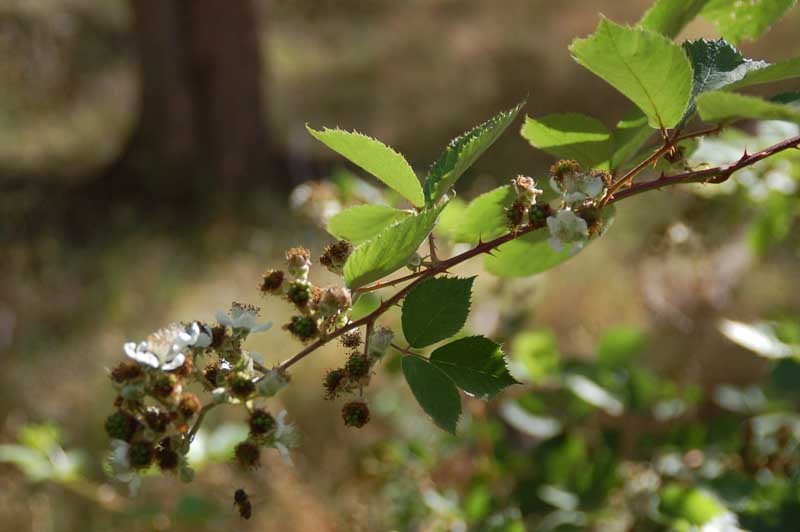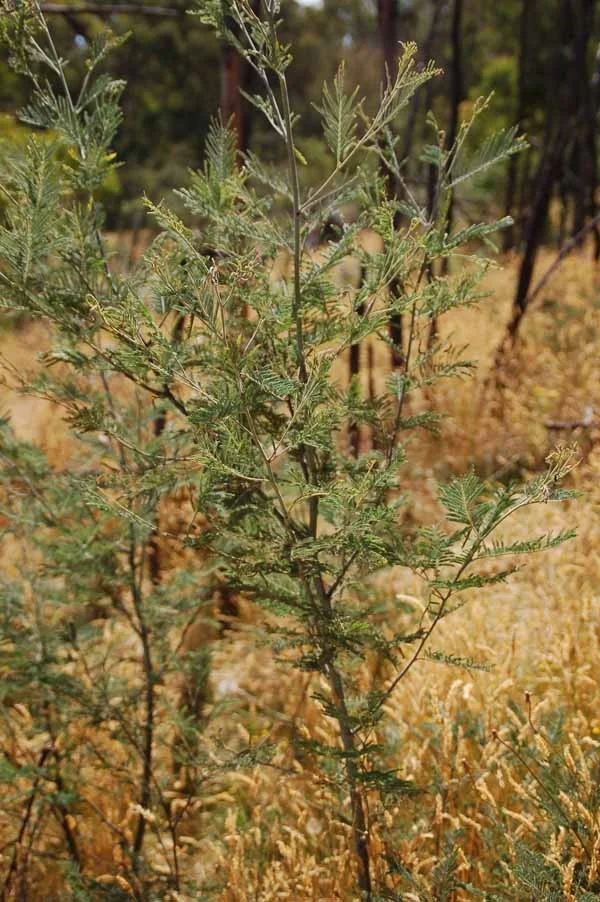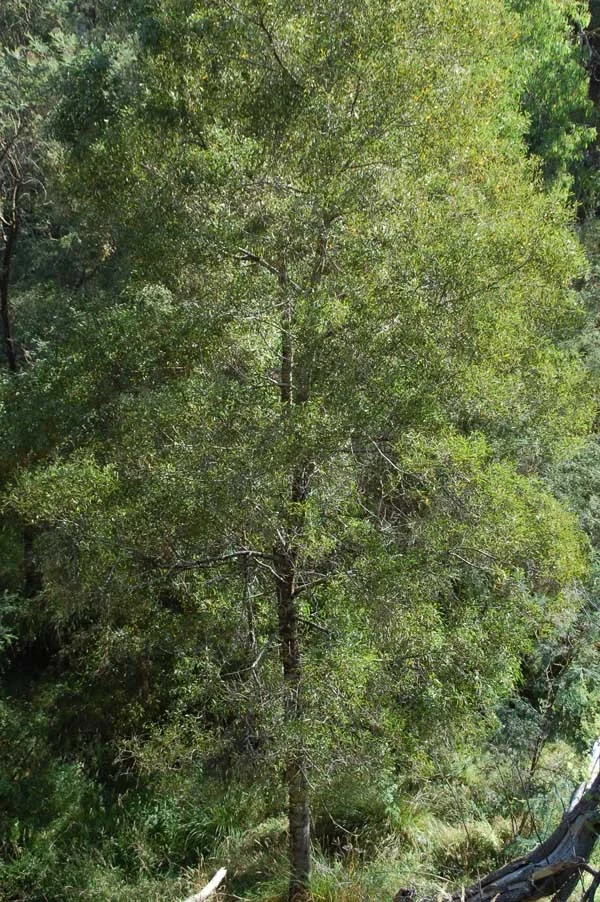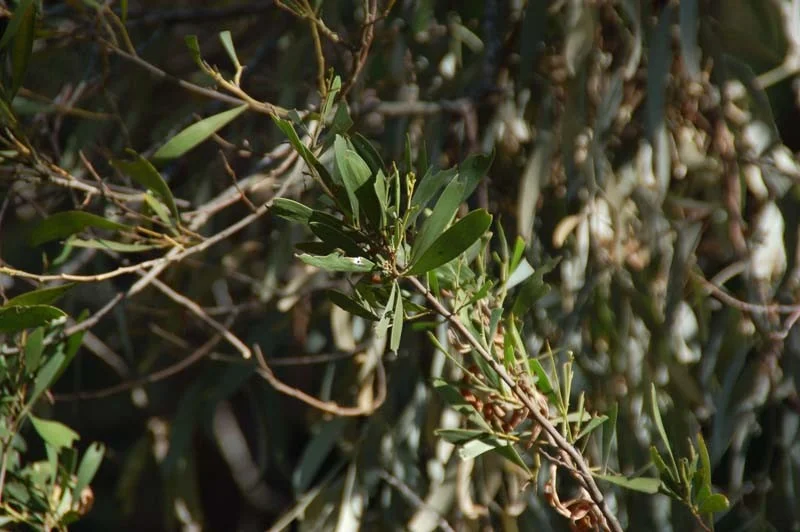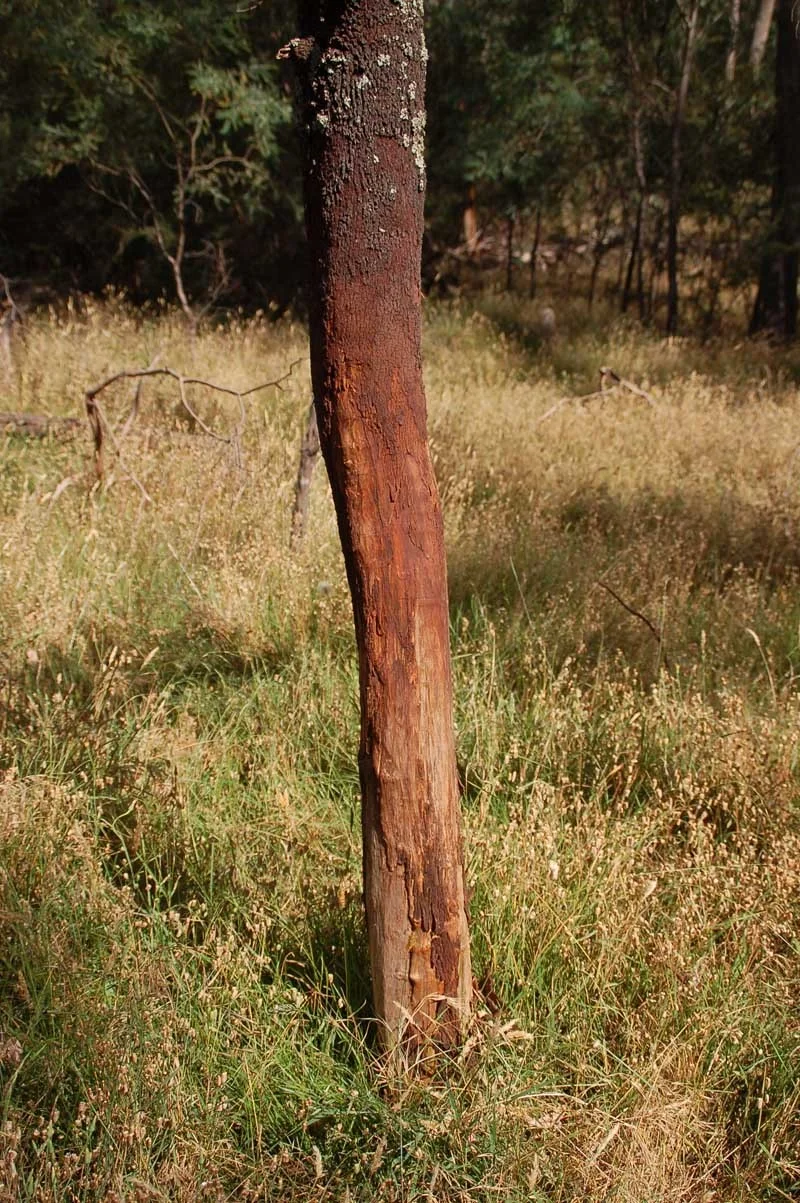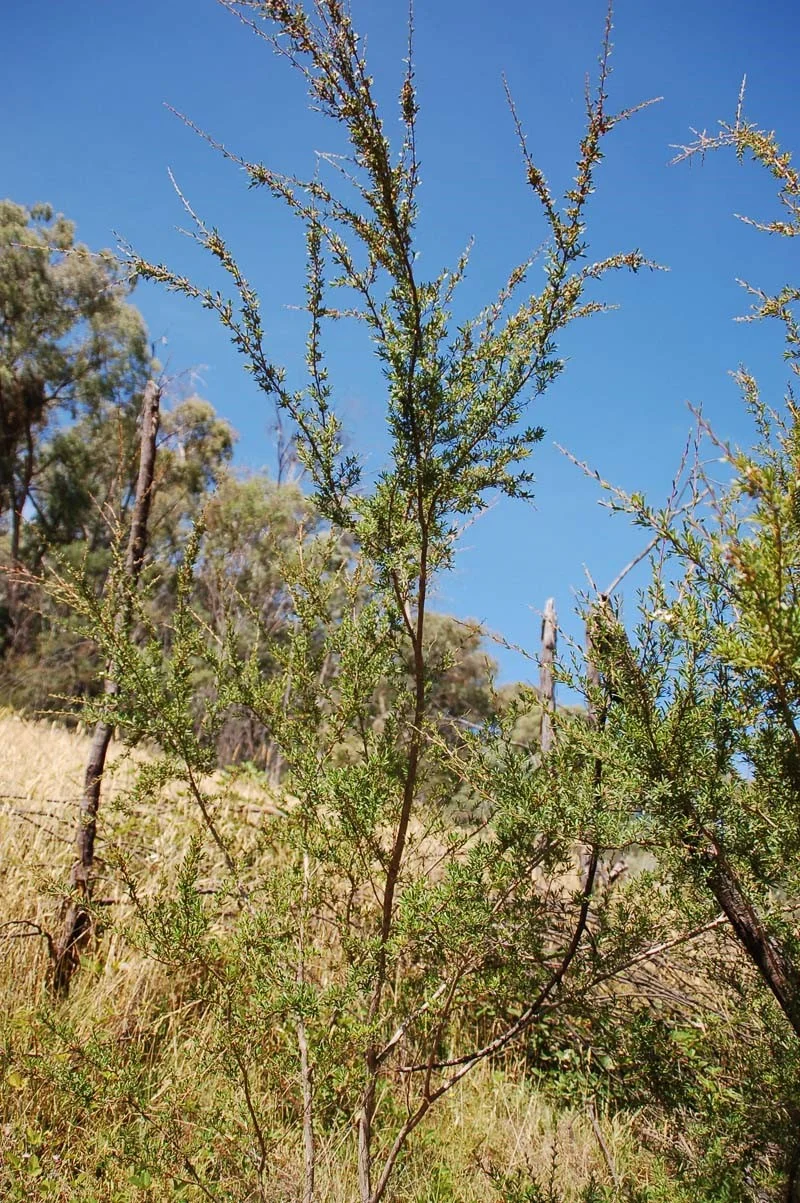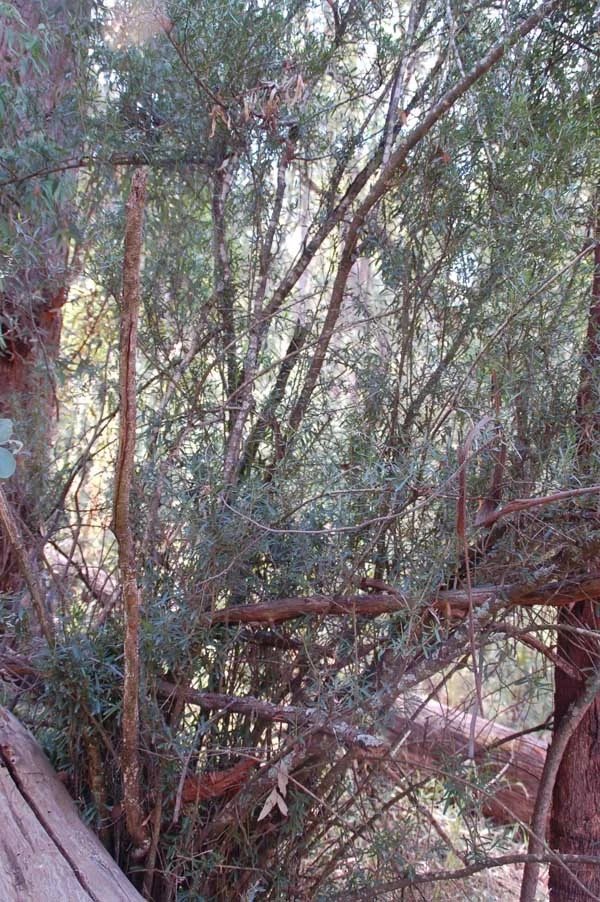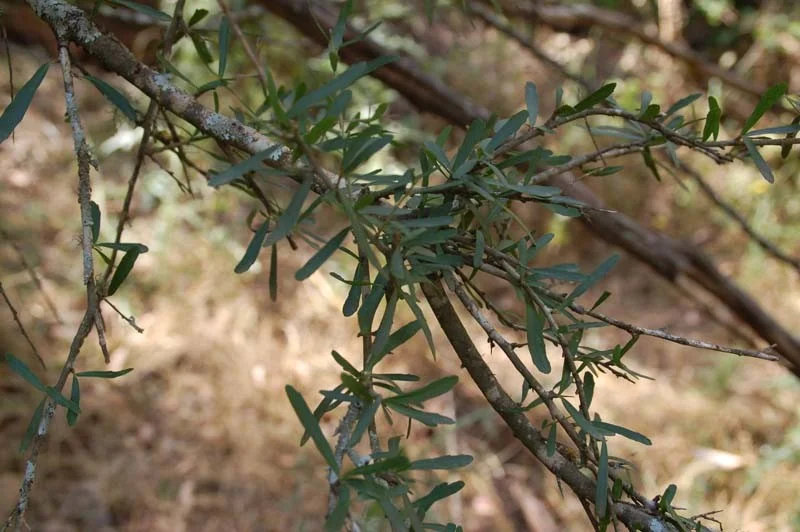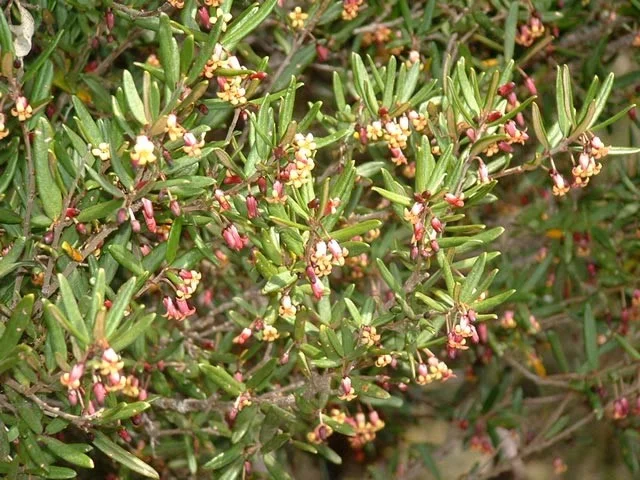Flora
One of the most common misconceptions that beginners have is what the Sambar deer diet consists of.
Most beginners are under the impression that Sambar are a grazing animal similar to cattle and sheep, this of course is not correct as Sambar are a browser. What is a browser? In simple terms this is any animal that feeds on a variety of vegetation, but only eating a little of each. Sambar in particular are very adaptable to their environment and are able to survive on most types of plant life in the bush. This can vary from native to introduced species and is not restricted to any single variety. One of the best descriptions that I have heard to further describe the Sambar diet is "they eat a little bit of everything and a lot of nothing."
Because beginners struggle with being able to identify and understand the most common plants and trees that play a significant role in hunting Sambar.
With this is mind I have attempted to cover a few of the most important plants and trees that you should be familiar with and therefore be able relate to their names in conversations that follow a hunt. By no means is this intended to be a complete guide to the Sambar diet, as this would be a book in it self. Also, keep in mind that what is outlined here can vary according to the area you are hunting in.
Blackberry
Typical Blackberry Bush
Blackberry, hunters hate them and Sambar love them. Throughout most of the area that I hunt this noxious weed occurs in various quantities. In the bottom of south facing gullies they tend to be more vigorous in growth and size. Even to the extent that in some spots you cannot cross gullies because they are completely overgrown with blackberries. However, go to the tops of high ridgelines and blackberries are relatively sparse.
The thing you will find about this thorny plant is that Sambar will almost always browse on them. At certain times of the year more so then others. This is true especially during drought when other good quality feed is limited. However, keep in mind that again, Sambar do not solely eat blackberry alone. If you come across this plant during your hunt (especially large patches) it is always worth while to have close look to see if it has been browsed, especially when new shoots are growing. What you are looking for is the ends of the shoots being bitten off at height that is similar to a standing deer. Although Sambar will browse lower to the ground, this can be misleading as other animals will also eat this plant and this is not possible to distinguish. In some cases you may be able to confirm that a deer is most likely responsible by its tracks.
Blackberry Branch in Flower
The other significant thing about blackberries is that Sambar will often use them to hide in. This is very common when they discover your approach whilst feeding on them. If the patch is large enough Sambar will crawl into them or lay down behind them and let you walk past.
Wattle
Young Golden Wattle Tree
Black Wattle Tree
Black Wattle Tree branch
The Black Wattle is a larger tree then the Golden Wattle, growing to a height of around 20 meters. This tree will grow mostly along creek lines and in gullies that have damper conditions. Sambar will browse on the leaves and on occasion use them as rub trees.
Wild Cherry Tree
If you have hunted Sambar for any length for time, particularly stags then you will be very familiar with this tree. Probably to the extent that you will spot one from longer distances. In addition if you hunt a particular piece of country then you will know where they are and included them on the route you will hunt.
For those that are new to hunting Sambar then if you only remember one plant then this would be it. The Cherry tree is probably the most often used rub tree in areas that it grows. Similarly if you find one that has been rubbed by a stag then have good look around as often there will be more then one. On occasions you can find a whole line of then along a gully or even along ridges. Then there are those that are rubbed year after year by different stags to the point that they have rubbed a hollow into the trunk of the tree.
Cherry Tree Rub
The next important thing about Cherry Trees is that Sambar love to eat the leaves. In some areas you can see that all the lower branches have been completely stripped of all leaves to the height of a standing Sambar and even higher. Sambar will rear up on their hind legs to reach branches and this behaviour cluster is not just used on Cherry trees but any vegetation that they think is tasty.
Cherry Tree Branch
Dogwood
Dogwood is another one of those plants that hunters are not very fond of. It tends to grow in thick patches, and if you find yourself in the middle on one these inadvertently, you will curse it. Dogwood will grow to a height of about 2 -3 meters and in places tends to take over. However, for Sambar its a great source of cover and they will frequently use it to bed down in. Unfortunately due to the thickness of dogwood getting a shot or even a look at Sambar is nearly impossible. Most of the time all you will hear is the sound of a deer crashing away with perhaps a preceding bark.
Dogwood
Tea Tree
This plant will grow to around 6 meters and in places will occur in large patches sometimes acres in size. This plant when it is still not very tall, say 2 - 3 meters is nearly impossible to walk through. If you manage to push, bash you way through the tangle of branches, visibility will mostly be measured in feet. However, once it has reached its full height it tends to be relatively open once you get inside, this is due mainly the lack of light that can penetrate through the canopy and thus prevents much of anything to grow underneath.
Tea Tree
If you hunt very slowly, stopping often and looking for parts of deer it is possible to get a shot. But certainly by no means easy.
Similar to Dogwood Sambar tend to bed down in Tea tree, and you can nearly be certain that if you put a deer up and there is a patch of tea tree near by, then that is where they will head. If you spend some time poking your way around a patch of tea tree you almost certainly find deer beds inside. I have also found tea tree that has been used as a preaching tree by a Sambar Stag.
Tea Tree Branch
Prickly Coprosma
This shrub is another deer favourite. It can grow to height of around 4 meters and in some areas it may not be very numerous.
The distinguishing feature has coprosma has is its small fine sharp thorns. You will certainly remember this shrub after the first time you grab a hand full of branches to make way whilst hunting. The thorns tend to break off in the skin and if not removed will get infected.
Prickly Coprosma
Sambar are rather partial to this shrub and again if you find an area where it grows, check for tracks and if you notice the ends of branches bitten off then mostly likely Sambar are in the area.
Prickly Coprosma Branch
Banyalla Tree
Bushy shrub or small tree, 3-6m high. Dark green leaves are paler and hairy below. Single, bell-shaped yellow flower with maroon tones on the back in leaf axils, appearing from October to November.
Banyalla in Flower
As with all of these plants, where this one grows Sambar will browse on it.
I hope this short and simple guide will help you identify at least some of the plants I have listed. I think the most important is the Cherry tree, because it does tell you there is a stag in hard antler in the area. But as I mentioned earlier Cherry trees do not occur in all areas so keep an eye out for what trees are rubbed in the area you are hunting.
Ken Leatham
